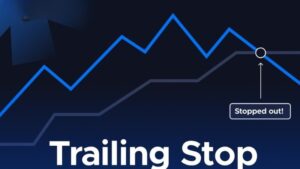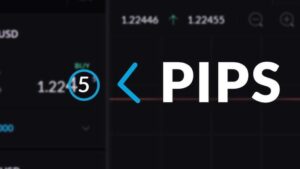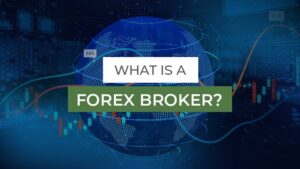Don’t let your investment dream be destroyed by scams. According to a joint report released in the first half of 2025 by the Hong Kong Securities and Futures Commission (SFC) and China’s Ministry of Public Security, cases involving “forex platform scams” increased by 32% in 2025, with total losses reaching HKD 860 million.
Forex platform scams often disguise themselves as legitimate platforms, luring victims with promises of high returns. These international trading platform scams span across stocks, forex, and cryptocurrencies, particularly targeting Traditional Chinese market users and mainland Chinese investors, who are more vulnerable due to information asymmetry.
Why are forex platform scams becoming more rampant?
Why can’t forex platform scams be eradicated? On the one hand, forex trading involves cross-border capital flows, making regulatory coordination highly complex and giving scam syndicates opportunities to exploit. On the other hand, some investors’ greed for “high returns” and neglect of market risks make scam rhetoric consistently effective.
What’s even more alarming is that by 2025, scams have evolved from crude “runaway schemes” into “sophisticated disguises,” even mimicking the operational processes of legitimate platforms, making it extremely difficult for investors to detect.
These forex platform scams not only cause massive financial losses to investors but also severely undermine overall market confidence.

Latest in-depth analysis of forex platform scam tactics: from disguise to manipulation in a full-cycle trap
The core of a forex platform scam is always about “gaining trust” and “locking in funds,” but in 2025 the methods have become more covert and more specialized. From early-stage traffic funneling to the final “harvest,” every step is carefully orchestrated.
Impersonating legitimate platforms: deceptive “counterfeit traps”
This is one of the most common tactics in forex platform scams.
Scam syndicates set up websites or apps that look almost identical to legitimate platforms, sometimes changing just a single letter in the domain name or swapping the top-level domain. They even copy the legitimate platform’s logo, page layout, and promotional text, making it hard for investors to distinguish authenticity.
Their funneling methods are also highly targeted: cold calls disguised as “financial advisors” via social media groups, or even hiring influencers to recommend the platform, claiming it is a “branch of a well-known platform” or an “exclusive cooperation channel.” Once users click the link to register, they are directed to deposit funds into a fabricated “trading account.”
To build trust, these scams may even allow small withdrawals at first (for example, a few hundred US dollars). But once investors deposit large sums, the site suddenly shuts down, and customer service phones and emails all become unreachable.
In a 2024 case cracked by Hong Kong police, a forex platform scam defrauded more than 200 investors of HKD 300 million. Victims included many experienced traders—who let their guard down because they failed to carefully check the website address and mistook it for a familiar platform.
Fake regulatory packaging: exploiting “false authority” to gain trust
Regulatory licenses are a key factor for investors to judge the safety of a platform, which is why they are often the focus of disguise in forex platform scams.
Scam platforms display “regulatory licenses” prominently on their websites. Common tricks include:
- Forging licenses from recognized authorities: directly copying the license format of the UK’s FCA or Australia’s ASIC, and fabricating fake numbers (for example, since FCA license numbers are six digits, scammers randomly generate a sequence to pass it off).
- Misusing offshore regulatory claims: claiming to be regulated by “Seychelles FSA” or “Vanuatu VFSC,” where regulatory oversight is weak, and in many cases, the scam platforms don’t even have authentic registration details.
- Inventing international bodies: creating names like “Global Forex Regulatory Alliance” or “International Financial Association,” which sound authoritative, and building counterfeit websites posing as official sites, making it impossible for investors to verify.
In its Q1 2025 warning list, the UK’s FCA pointed out that over 60% of unauthorized platforms had falsified regulatory information.
Forex platform scams exploit investors’ lack of familiarity with regulatory systems to create a false sense of “safety and reliability,” when in reality there is no protection at all.
High-return rhetoric: the hidden capital-locking conspiracy behind “guaranteed profits”
“Monthly returns above 20%,” “zero-risk guaranteed capital,” “AI robots making money automatically”—these pitches frequently appear on social media and in investment groups, and are typical hallmarks of forex platform scams.
Scam groups disguise themselves as “senior analysts” or “trading gurus,” holding livestream lessons, sharing “profit screenshots” (mostly photoshopped), and claiming to possess “insider information” or “foolproof strategies,” luring investors to deposit and copy trades.
However, anyone with basic knowledge knows that the forex market is driven by multiple factors such as global events and economic data, with extreme volatility—even seasoned traders struggle to guarantee consistent profits.
These high-return promises are essentially bait in forex platform scams: once investors deposit, they either face frequent losses (with the platform manipulating the backend to make them “lose money”) or encounter obstacles when trying to withdraw (such as being told “your account is abnormal and requires a deposit of margin” or “profits are taxable upfront”).
Even more insidiously, scammers exploit investors’ “loss-recovery psychology.” When losses occur, the so-called “mentor” will suggest, “add more funds and you can recover,” coaxing them into repeated deposits until they are deeply trapped.
Ponzi Scheme Variant: The Pyramid Scheme Disguised as “Forex Copy Trading”
These fraudulent forex platforms are even more deceptive. They do not directly promise high returns but instead operate under the names of “entrusted wealth management” or “intelligent copy trading,” claiming “professional team management with stable monthly dividends.”
More crucially, they encourage users to “develop downlines”—recommending friends and family to deposit funds can earn a 5%-10% bonus, and if those downlines recommend others, users can also receive “indirect rewards.”
It appears to be “sharing wealth,” but it is actually a variant of a Ponzi scheme: the so-called “dividends” do not come from trading profits at all but are paid out using the deposits from new investors to cover the “returns” for older ones. Once there is insufficient inflow of new capital, the entire scheme collapses instantly.
In early 2025, the collapse of a “forex copy trading platform” in Southeast Asia, involving over $1 billion and leaving tens of thousands of investors with total losses, is a classic case of forex platform fraud.
| Type of Scam Tactic | Main Characteristics & Sales Pitches | Warning Signs Investors Should Watch For |
| Imitating Legitimate Platforms | Slight differences in website URLClaims to be a “branch” of a well-known platformContact only via non-official software | Misspelled website URLNo record of the partnership on the legitimate platform’s official websiteCustomer service refuses to provide an official phone number |
| False Regulatory Information | Displays vague license numbersClaims “international regulation” but names no specific authority | No record found on the regulator’s official websiteLicense number cannot be found in the official systemUnfamiliar regulator name with non-authoritative websiteRefuses to provide full regulatory number |
| High-Return, Capital-Guaranteed Promises | “Earn 20% per month or more””Zero risk,” “guaranteed winning strategy”Shares exaggerated profit screenshots | Disregards risk warningsEmphasizes “limited opportunity” to pressure depositsDoes not explain the source of profits |
| Withdrawal Difficulties / Manipulation | Far-fetched reasons for rejecting withdrawals (e.g., “must pay taxes to withdraw”)Frequent disconnections, abnormally large slippage | Small withdrawals process smoothly, but large ones are blockedSystem always fails during critical market conditionsCustomer service responses are perfunctory and delayed |
| Ponzi / Pyramid Scheme | Emphasizes “referral bonuses” and “static dividends”Profit model relies on new user depositsPackaged with “top-tier team” background | Encourages developing downlinesDoes not explain trading strategy detailsReturns are disconnected from market conditions |

How to Identify Forex Platform Scams?
Faced with these ever-changing forex platform scams, investors need not panic. Establishing a “verification process” can effectively help avoid these pitfalls.
Personally Verify Regulatory Licenses; Reject “Vague Information”
Regulation is the first line of defense against forex platform scams. Regulatory information for legitimate platforms is always publicly verifiable. The specific steps are as follows:
- Obtain the full regulatory license number from the platform’s official website (e.g., Ultima Markets is regulated by the UK FCA; the license number can be found on their website under ‘About Us – Regulatory Information’).
- Directly open the official website of the regulatory authority (e.g., FCA website, ASIC website). Do not click on any “query links” provided by the platform (they might be fake websites).
- Enter the license number into the official query system (e.g., FCA’s Financial Services Register). Check if the resulting company name, registered address, and scope of regulated activities exactly match the platform, and ensure the regulatory status is “Authorised” (Active).
If no results are found, or if the information does not match, it can basically be considered a forex platform scam. Prioritize platforms regulated by strict authorities like the FCA, ASIC, or CySEC. These regulators not only have high requirements for platform qualifications but also often provide investor compensation schemes.
Utilize Demo Accounts to Test Platform Authenticity
A demo account is not just a tool for practicing trading; it is also a “touchstone” for testing a platform’s reliability. The demo environment of fraudulent forex platforms often has flaws: either the quotes deviate significantly from mainstream market data (e.g., EUR/USD quote is 0.01 higher than the real market), execution speed is erratic, or it may even show manipulated, extremely high profits (e.g., making profits from random buys and sells), all aimed at inducing users to open a trading account.
Legitimate platforms, however, have demo environments almost identical to their real trading conditions. It is advisable to use a demo account for 1-2 weeks before opening a trading account to observe the platform’s stability.
Beware of Over-Marketing; Steer Clear of “High-Pressure Sales” Tactics
Forex platform scams are often accompanied by “high-pressure sales”—if a platform frequently bombards you with calls and messages, promoting “limited-time offers” or “limited spots,” or even using phrases like “miss out today and you lose” or “last 3 spots for deposit benefits” to create anxiety, it is most likely problematic.
Legitimate platforms give investors sufficient time to research information and do not pressure them to deposit funds. For example, Ultima Markets’ customer service provides assistance only when users actively inquire, avoids frequent harassment, and their official website details all fees and risks, allowing users to make independent decisions.
Test With Small Withdrawals to Verify Platform’s Fulfillment Capability
Even if initial verification checks out, do not rush to invest large amounts of capital after your first deposit. First, attempt a small withdrawal (e.g., $500-$1000).
This is the “final check” to test if the platform is a scam:
Legitimate platforms have clear withdrawal processes, with processing times matching their claims (e.g., 1-3 business days for bank transfers, 1 business day for e-wallets), and reasonable fees.
If the platform creates obstacles with reasons like “identity verification not passed,” “need to pay taxes,” or “must reach a certain trading volume before withdrawing,” or delays for more than a week, it can basically be identified as problematic. Immediately stop further deposits and gather evidence.

FAQ
Q: The platform claims to have “insider information” and guarantees a 30% monthly profit. Could this be a forex platform scam?
A: It is almost certainly a scam. The foreign exchange market is the world’s largest financial market, and its prices are driven by publicly available information such as economic data and policy changes from various countries. There is no such thing as “insider information.”
Any platform promising fixed high returns (e.g., over 20% monthly profit) is essentially using funds from later investors to pay “returns” to earlier ones, and it is destined to collapse eventually.
Investors should remember: Forex trading carries risks; there is no such thing as “guaranteed profits.” Overly attractive promises often conceal traps set by forex platform scams. It is recommended to first use a demo account to experience real market volatility before judging the platform’s reliability.
Q: I successfully made a small withdrawal from a platform. Should I still be concerned it might be a forex platform scam?
A: Yes, remain highly vigilant!
This is a common tactic used by forex platform scams—building trust through successful small withdrawals to lure you into investing more funds and even recruiting friends and family. Once the capital pool is large enough, they will refuse further withdrawals using excuses like “account anomalies” or “tax payment required for withdrawal,” before finally shutting down the platform and disappearing.
Judging a platform’s safety cannot rely solely on small withdrawals. It is crucial to check core indicators like regulatory licenses and fund segregation mechanisms, such as confirming whether client funds are held in segregated bank accounts and if the platform is regulated by authoritative authorities.
Q: How can I quickly distinguish between a genuine and a forged regulatory license?
A: The key is “official verification,” which can be done in three steps:
- Obtain the full regulatory license number from the platform (e.g., FCA license numbers are 6 digits, ASIC numbers include letters).
- Open the official website of the regulatory authority (e.g., search directly for “FCA Financial Services Register” for the FCA website). Do not click on links provided by the platform.
- Enter the license number on the official inquiry page and verify that the resulting company name, website URL, and scope of authorized activities exactly match the platform, and that the regulatory status is “Authorised” or “Active.”
If no results are found, or if there are discrepancies (e.g., slight variations in the company name), it can almost certainly be identified as a forex platform scam.

Conclusion
The essence of forex platform scams lies in exploiting investors’ greed and information asymmetry to set traps. Although scams in 2025 may be more concealed, remembering key principles—”there are no guaranteed profits in trading,” “regulatory licenses must be verifiable through official channels,” and “testing with small withdrawals is essential”—can significantly reduce the risk of falling victim.
The prerequisite for investing is to protect your capital. When preparing to enter the market, consider using a demo account to familiarize yourself with the rules first. Only open a trading account after confirming the platform’s reliability. Caution will always be the first line of defense on your investment journey.



